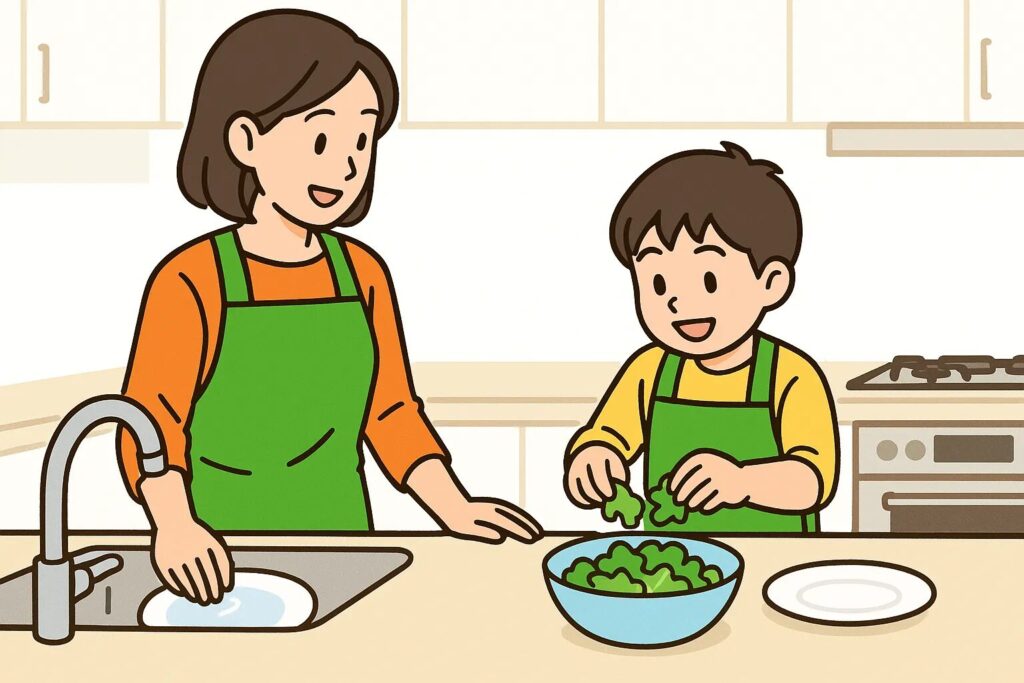1. Introduction
Do you ever think “I want my child to help with cooking, but I don’t know where to start…” or “I’m still worried about letting them use knives or the stove…”? Actually, the best first steps in cooking are “washing”, “plating”, and “tearing tasks”. These are not only safe activities but also ones where children can easily experience the joy of cooking. In this article, we’ll introduce three perfect starter activities for children and tips on how to approach them.

2. Practical Points and Specific Examples
- “1. Getting Familiar with Ingredients and Tools Through Washing”
As a first step in learning to cook, it’s recommended to let children handle washing ingredients and tools.
- Washing Ingredients
- Rinsing lettuce and spinach to remove dirt
- Scrubbing potatoes and carrots with a sponge
- Washing and preparing fruits
- Washing Tools (from lower elementary grades)
- Washing light dishes and bowls
- Gently scrubbing with a sponge
Tip: Make it fun and safe by emphasizing “wash hands thoroughly → wash items gently”!
- “2. Experience the Joy of Completion Through Plating!”
Plating is an activity that nurtures children’s creativity while sparking their interest in cooking.
- Simple Plating Tasks
- Arranging salad on plates
- Using molds to shape rice for curry
- Topping pancakes with fruit
Tip: Children’s motivation increases when you tell them “You can plate it however you like!”
- “3. Start Cooking Fun with Tearing Tasks!”
Tearing is ideal as a first cooking step because it allows safe handling of ingredients without using knives.
- Examples of Tearable Ingredients
- Lettuce and cabbage → For salads and stir-fries
- Mushrooms (shimeji, enoki, maitake) → For miso soup and other soups
- Nori seaweed → For onigiri and bentos
Tip: Children become more interested when you explain “Hand-tearing helps the flavors absorb better!”
3. Important Points and Tips
- “Let them do what they can”
Forcing them can be counterproductive, so it’s important to let children engage with what interests them.
- “Create an environment where mistakes are okay”
It’s fine if water spills or if things aren’t torn evenly. The important thing is to “give it a try.”
- “Don’t help too much”
Though you may want to step in, letting children work at their own pace leads to a sense of achievement.
4. Summary and Next Steps
For children new to cooking, the three recommended starting points are “washing”, “plating”, and “tearing tasks”. Let’s start with:
- Begin with washing ingredients & tools
- Let them handle plating to experience the satisfaction of completing a dish
- Enjoy tearing lettuce and mushrooms as starting steps! When children experience the joy of cooking, their interest naturally expands to the next steps!




